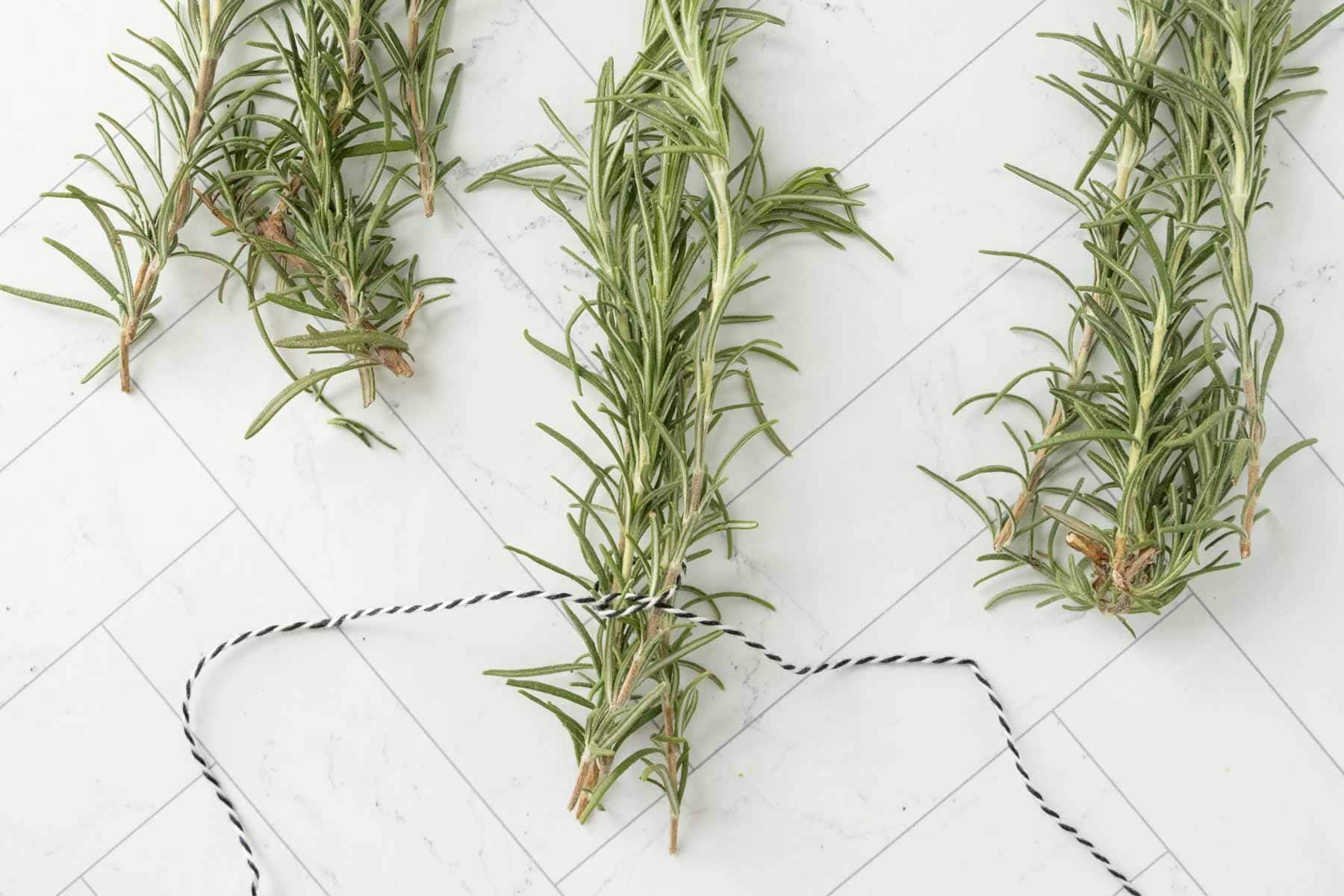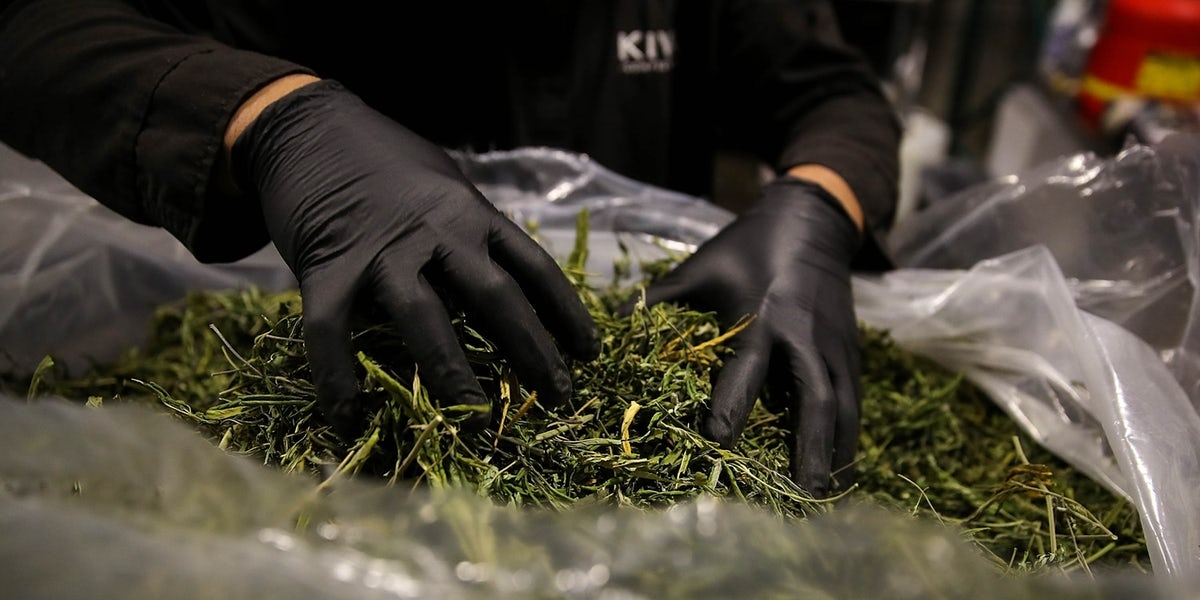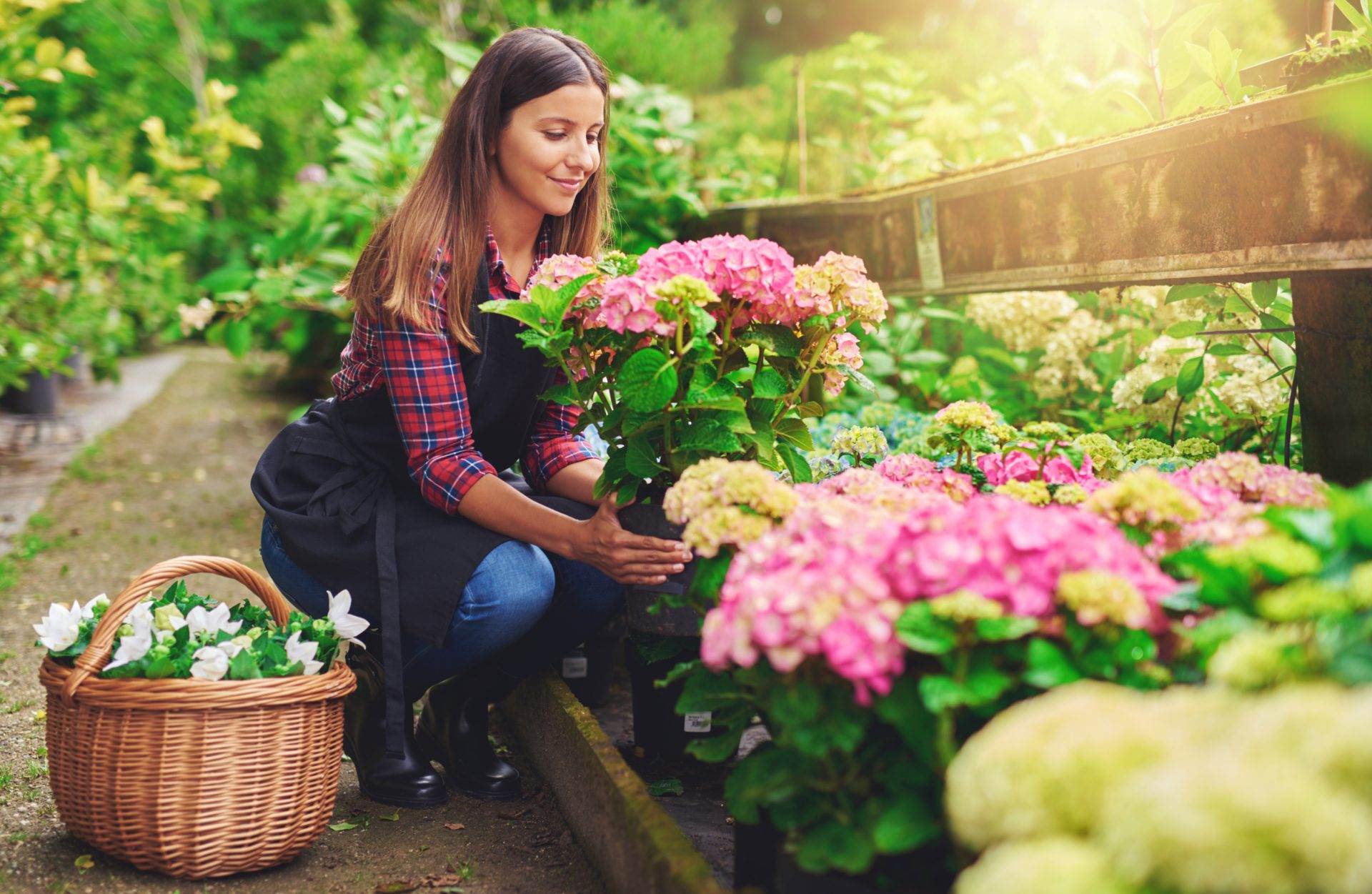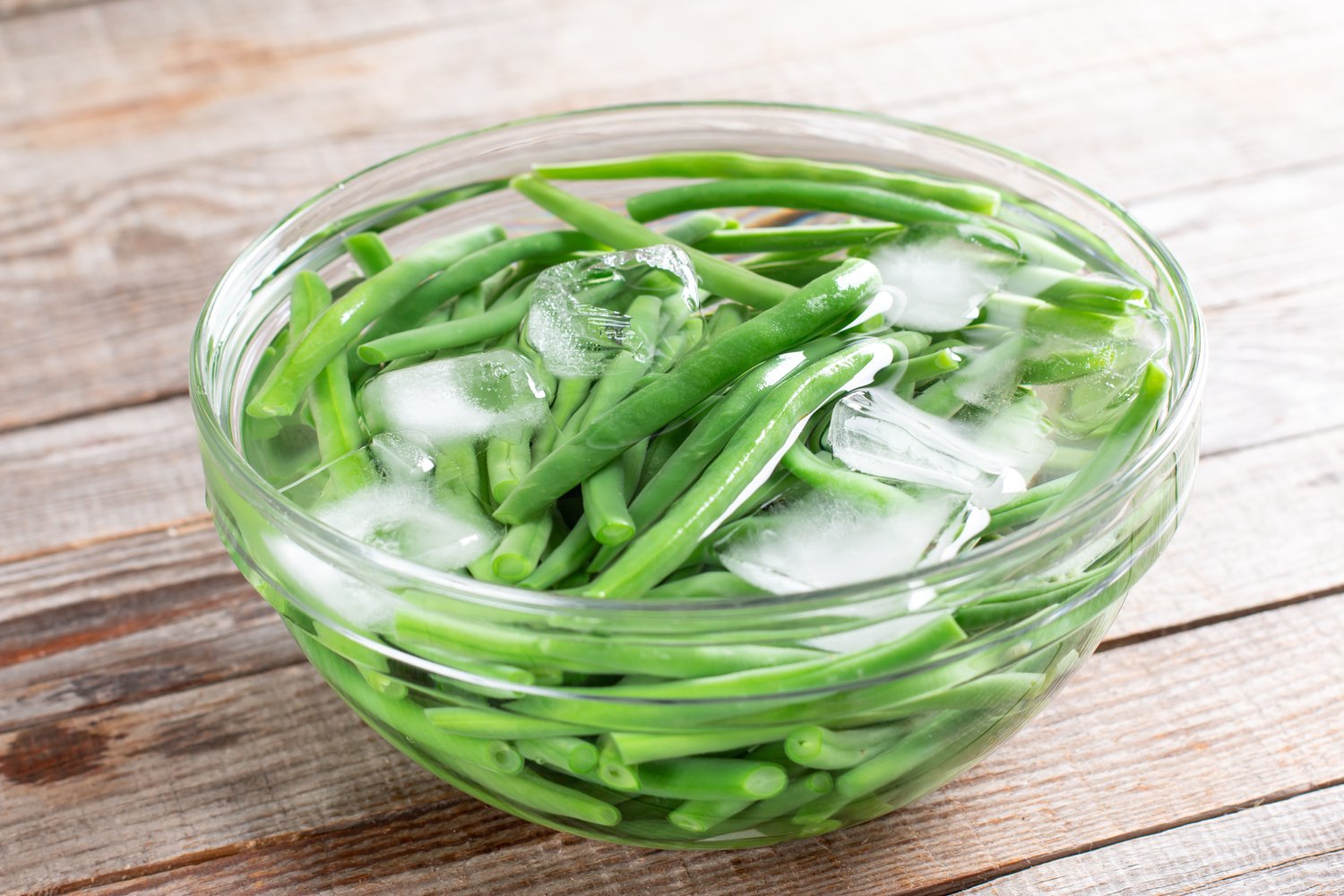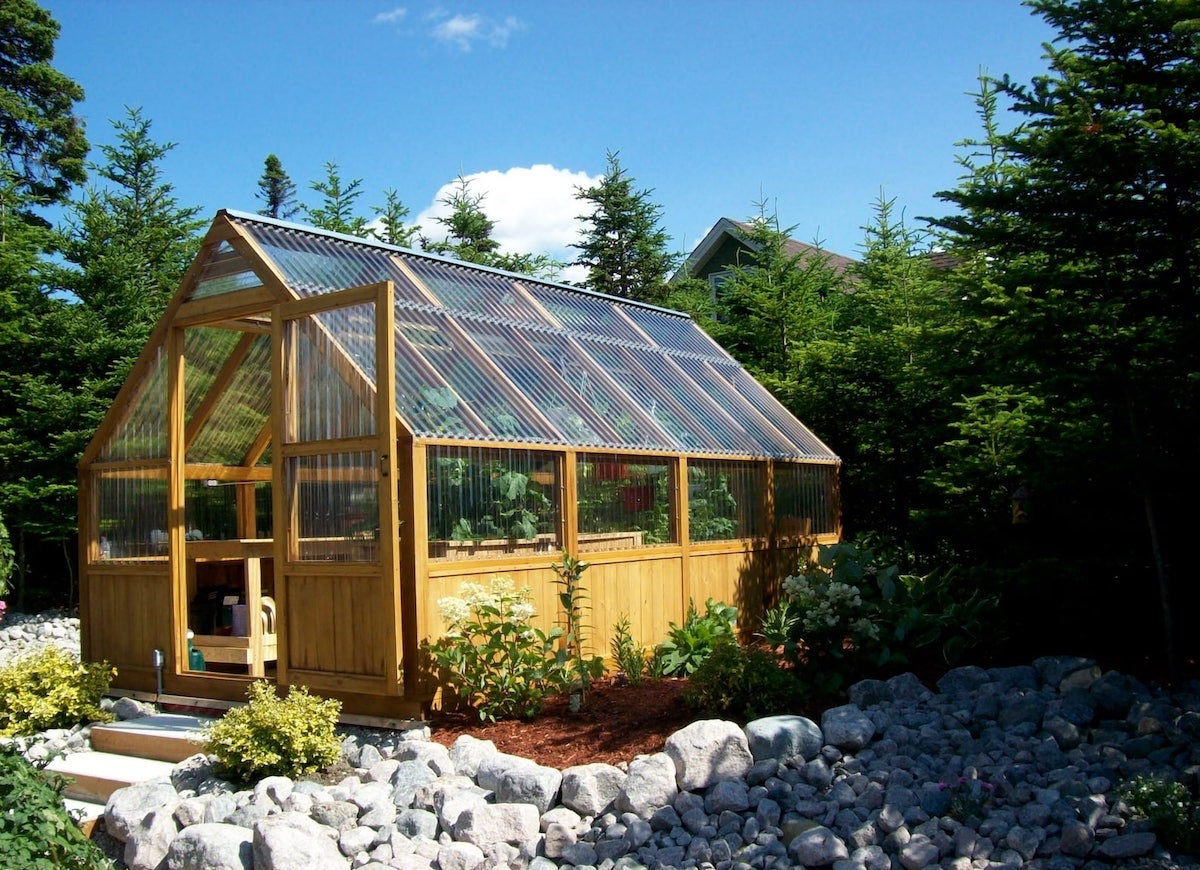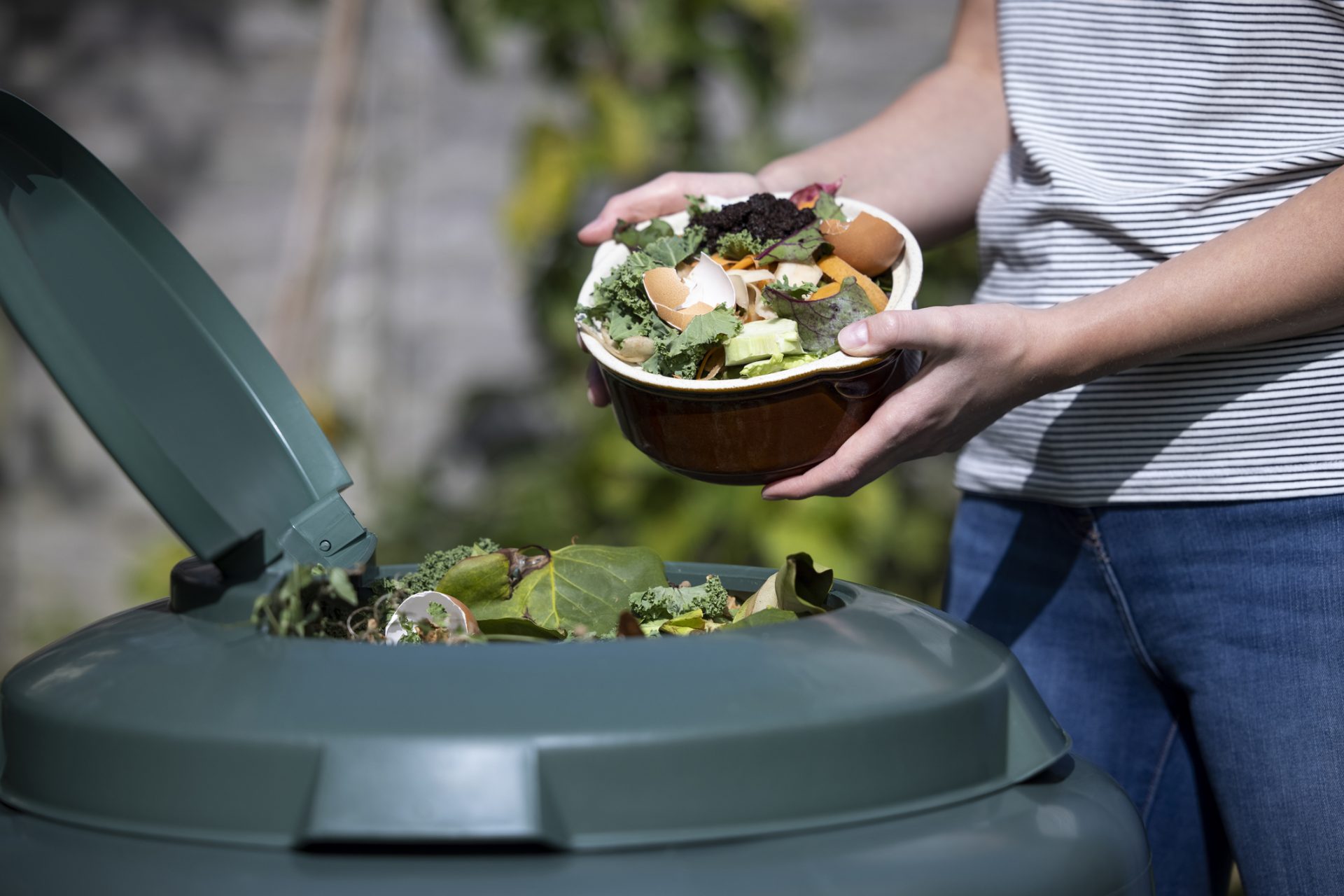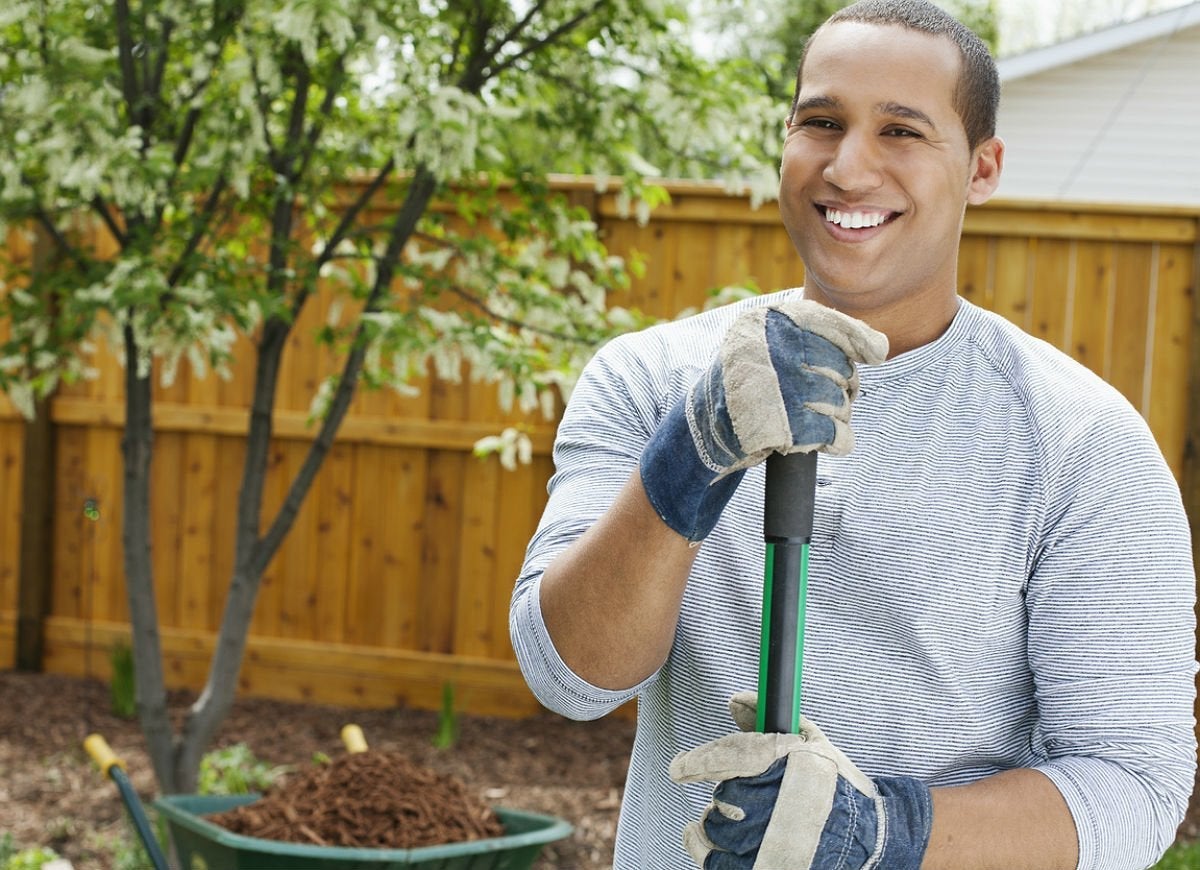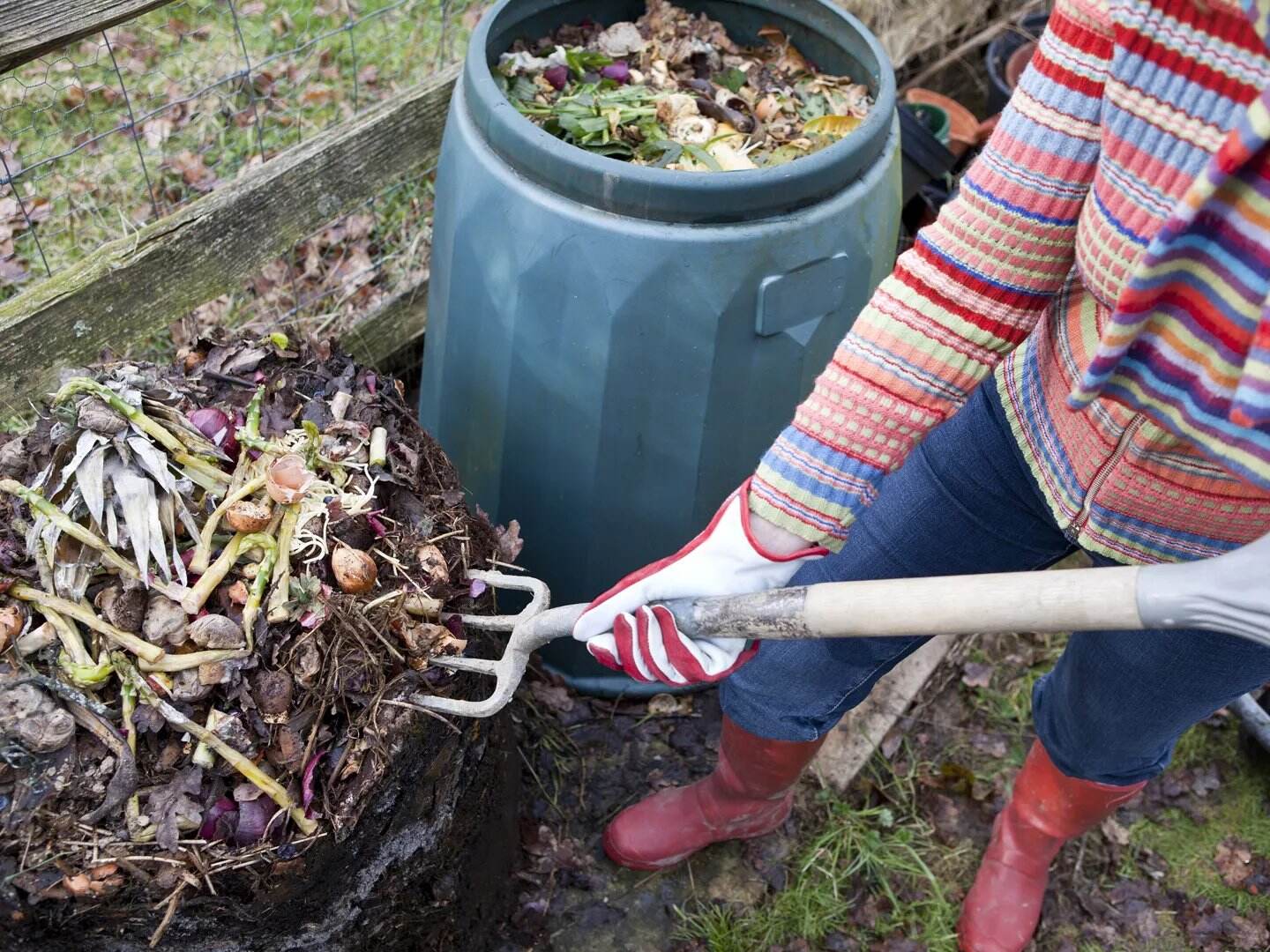Home>Gardening Tips and Tricks>Eco-Friendly Gardening>How Do You Compost
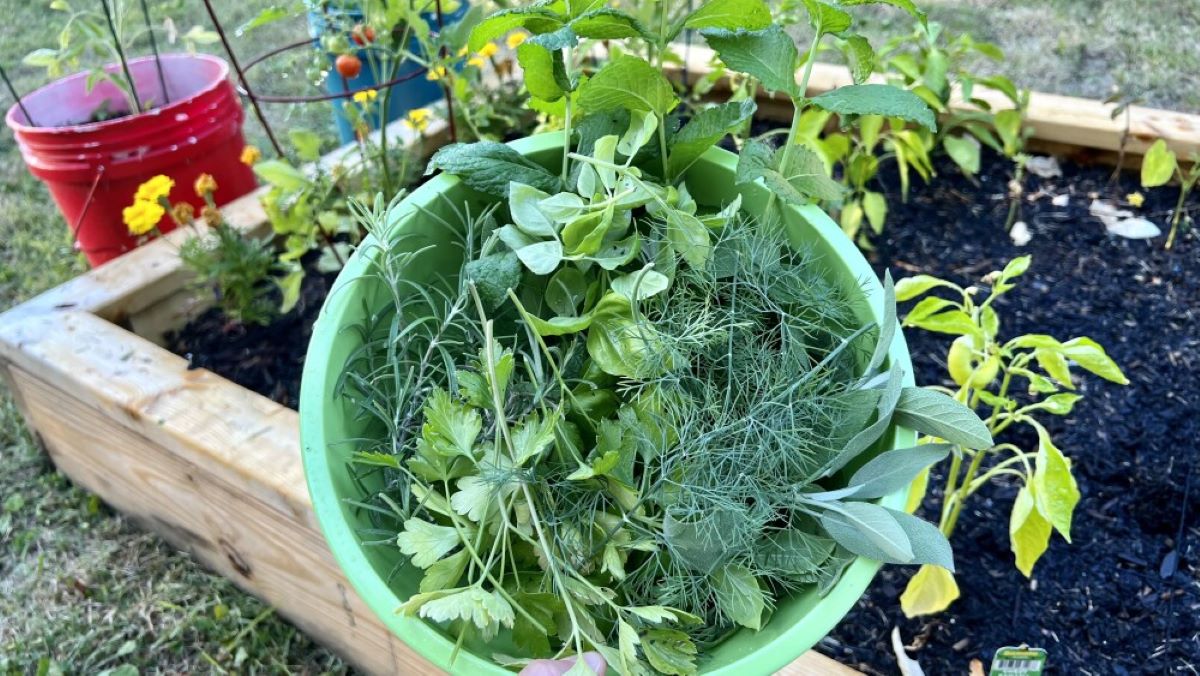

Eco-Friendly Gardening
How Do You Compost
Modified: January 22, 2024
Learn how to compost and start practicing eco-friendly gardening for a healthier planet. Our comprehensive guide covers everything you need to know.
(Many of the links in this article redirect to a specific reviewed product. Your purchase of these products through affiliate links helps to generate commission for Chicagolandgardening.com, at no extra cost. Learn more)
Table of Contents
Introduction
Welcome to the world of eco-friendly gardening! If you’re passionate about gardening and want to reduce your environmental impact, then eco-friendly gardening is the way to go. One of the key practices in eco-friendly gardening is composting, which not only benefits your garden but also helps reduce waste and conserve resources.
Composting is a natural process of recycling organic materials, such as kitchen scraps and yard waste, into nutrient-rich soil amendments. By composting, you can turn organic waste into “black gold” – a valuable resource that can improve your soil structure, enhance plant growth, and ultimately lead to a healthier, more sustainable garden.
But composting goes beyond just producing amazing soil. It is also an opportunity to reduce landfill waste and greenhouse gas emissions by diverting organic materials from traditional waste disposal methods. In fact, according to the Environmental Protection Agency, yard trimmings and food scraps make up around 30% of what we throw away, contributing significantly to landfill problems.
By adopting composting practices, you can significantly reduce your carbon footprint and contribute to a greener planet. In this article, we will explore the world of composting, discuss its various benefits, explore different composting methods, and provide a comprehensive guide to help you get started with this sustainable gardening practice.
Whether you’re a seasoned gardener or just starting with your first pot of herbs, composting can be easily incorporated into your gardening routine. So, let’s dive in and explore the wonderful world of composting and how it can transform your garden into an eco-friendly oasis.
What is composting?
Composting is the process of breaking down organic materials into a nutrient-rich substance called compost. It is a natural form of recycling that mimics the decomposition process that occurs in nature. Through composting, organic waste is transformed into a dark, crumbly, and earthy material that can be used to nourish plants and improve soil health.
Composting relies on the activity of microorganisms, such as bacteria, fungi, and worms, which break down the organic matter into simpler forms. These microorganisms consume the waste materials, breaking them down into smaller particles and releasing nutrients that can be readily absorbed by plants.
Composting can be done on a small scale, such as in a backyard or balcony, or on a larger scale for commercial purposes. Regardless of the scale, the basic principles of composting remain the same: providing the right mix of organic materials, moisture, oxygen, and temperature for the microorganisms to thrive and carry out the decomposition process.
Compost is often referred to as “black gold” because of its numerous benefits for gardening. It helps improve soil structure, enhances water retention, promotes beneficial microbial activity, and provides essential nutrients for plant growth.
In addition to its benefits for plants, composting also plays a crucial role in waste management and environmental sustainability. By diverting organic waste from landfills, composting helps reduce the volume of waste going into landfills and minimizes the production of harmful greenhouse gases, such as methane. It is estimated that by composting organic waste, we can significantly reduce methane emissions, a potent greenhouse gas contributing to climate change.
Composting is a natural and environmentally friendly way to recycle organic waste, transform it into a valuable resource, and contribute to a more sustainable future. In the next section, we will explore the many benefits of composting and how it can positively impact your garden and the planet.
Benefits of composting
Composting offers a wide range of benefits for both gardeners and the environment. Here are some of the key advantages of incorporating composting into your gardening routine:
- Improves soil health: Compost enriches the soil by providing essential nutrients, such as nitrogen, phosphorus, and potassium, that support plant growth. It also improves soil structure, making it more fertile and better able to retain moisture.
- Reduces the need for chemical fertilizers: With the nutrient-rich compost, you can reduce or eliminate the use of synthetic fertilizers, which can be harmful to the environment and contribute to water pollution.
- Enhances plant growth and productivity: The balanced nutrient content in compost promotes healthy plant growth, leading to improved yields and better-quality fruits, vegetables, and flowers.
- Suppresses plant diseases: Compost contains beneficial microorganisms and organic matter that help improve soil health, suppress harmful pathogens, and enhance the natural disease resistance of plants.
- Reduces soil erosion: The organic matter in compost helps bind soil particles together, reducing erosion and promoting soil stability.
- Improves water retention: Compost amendments increase the water-holding capacity of the soil, reducing the need for frequent watering and conserving water resources.
- Reduces landfill waste: By diverting organic materials from landfills, composting reduces the volume of waste that ends up in landfill sites. This not only extends the lifespan of landfills but also reduces the production of harmful greenhouse gases.
- Reduces greenhouse gas emissions: Organic materials that break down in landfills produce methane, a potent greenhouse gas. Composting helps prevent methane emissions and contributes to reducing the impacts of climate change.
- Promotes sustainable gardening: Composting is a key practice in sustainable gardening. By closing the loop in the organic waste cycle, it demonstrates a commitment to environmental stewardship and a greener future.
By incorporating composting into your gardening practices, you can reap these numerous benefits while actively participating in waste reduction and environmental conservation. In the next section, we will explore different types of composting methods to help you choose the one that best suits your needs and resources.
Types of composting
Composting can be done in various ways, depending on the available space, resources, and desired level of involvement. Here are the most common types of composting methods:
- Backyard composting: This is the most traditional and accessible form of composting for homeowners. It involves creating a compost pile or using a compost bin in your backyard. Backyard composting allows you to compost a wide range of organic materials, including kitchen scraps, yard waste, and garden trimmings. It is a relatively low-maintenance method that relies on natural decomposition processes, with occasional turning and monitoring to ensure proper airflow and moisture levels.
- Indoor composting: Indoor composting, also known as worm composting or vermicomposting, is an ideal option for those with limited outdoor space or living in apartments. It involves using specialized containers, such as worm bins, to create a controlled environment for composting with the help of red worms. Indoor composting is typically done using kitchen scraps and shredded paper, and it requires monitoring and maintaining specific conditions to support the worm population.
- Trench composting: Trench composting involves digging a trench or pit in your garden and burying organic materials directly into the ground. This method is especially useful for disposing of large volumes of organic waste or when space is limited. The buried organic matter decomposes over time, enriching the soil in the surrounding area.
- Sheet composting: Also known as lasagna gardening or sheet mulching, this method involves layering organic materials directly on top of the soil surface. It can be done on bare soil or as a way to improve existing garden beds. Sheet composting combines a mix of nitrogen-rich materials, such as grass clippings and kitchen scraps, with carbon-rich materials, such as shredded leaves and straw. Over time, the layers break down and create nutrient-rich soil.
- Compost tumblers: Compost tumblers are rotating bins that speed up the composting process by providing better aeration and mixing of materials. They are especially convenient for those who want faster results or have limited space. Compost tumblers require regular turning to allow for proper oxygen flow and decomposition.
- Community or shared composting: In some urban areas, community composting programs or shared composting sites are available, where residents can contribute their organic waste to a larger composting operation. These programs often provide designated bins or collection points for community members. Community composting is a great way to compost when individual resources or space are limited.
Choose a composting method that suits your specific needs and resources. Consider factors such as available space, the amount of organic waste you generate, and the level of involvement you desire. Regardless of the method you choose, remember that successful composting requires a balance of ingredients, proper maintenance, and patience. In the next section, we will discuss the steps to get started with composting.
Choosing a composting method
When it comes to composting, choosing the right method is essential for success. The best composting method for you will depend on factors such as available space, the amount of organic waste you generate, and your level of involvement. Here are some considerations to help you choose the composting method that suits your needs:
Backyard composting: If you have a backyard or outdoor space, backyard composting is a popular and versatile option. It allows you to compost a wide range of organic materials, including kitchen scraps and yard waste. Backyard composting can be done using a compost pile or a compost bin. Consider the size of your backyard and the amount of waste you generate to determine the most suitable option.
Indoor composting: For those with limited outdoor space or who live in apartments, indoor composting, such as worm composting or vermicomposting, is an excellent choice. It involves using specialized containers, such as worm bins, to create a controlled environment for composting with the help of red worms. Indoor compost bins can be placed under sinks, in closets, or on balconies.
Trench composting: Trench composting is a simple and space-efficient method that involves burying organic waste directly in the ground. It’s an ideal option if you have a garden with limited space or want to dispose of large volumes of organic waste. Dig a trench or pit, add organic matter, cover it with soil, and let nature take its course. This method enriches the soil and eliminates the need for a physical composting bin.
Sheet composting: Sheet composting, also known as lasagna gardening or sheet mulching, is a no-dig approach to composting. It involves layering organic materials directly on the soil surface to create nutrient-rich soil over time. It’s a great method for improving existing garden beds or starting new ones. Layer nitrogen-rich materials like kitchen scraps and grass clippings with carbon-rich materials like shredded leaves and straw.
Compost tumblers: Compost tumblers are rotating bins that provide convenient and faster composting. They require regular turning to mix the materials and accelerate the decomposition process. Compost tumblers are a good option for those who have limited space or want to speed up the composting process. However, they may have a smaller capacity compared to traditional compost piles or bins.
Community or shared composting: In urban areas, community or shared composting programs might be available. These programs allow residents to contribute their organic waste to a larger composting operation. Look for community composting sites or programs in your area, as they can provide a convenient solution if you don’t have the resources or space for individual composting.
Consider your specific circumstances, such as available space, amount of organic waste, and desired level of involvement, when choosing a composting method. Remember, the success of composting relies on managing the ingredients, moisture levels, and airflow, so choose a method that aligns with your capabilities and commitment. In the next section, we will guide you through the steps to get started with composting.
Getting started with composting
Ready to start composting? It’s an exciting and rewarding journey that will transform your organic waste into rich, nutrient-filled compost for your garden. Follow these steps to get started:
- Choose a composting method: Consider the available space, the volume of organic waste you generate, and your level of involvement to determine the most suitable composting method for you.
- Select a composting container: Depending on the method you choose, select a composting container such as a bin, tumbler, or worm bin. Make sure it provides proper airflow, drainage, and insulation to promote decomposition.
- Collect organic materials: Gather organic materials suitable for composting, such as kitchen scraps (vegetable peels, fruit cores, coffee grounds), yard waste (grass clippings, leaves, small branches), and garden trimmings. Avoid meat, dairy, oily food, and pet waste.
- Balance the ingredients: Aim for a balanced mix of carbon-rich “browns” (dry leaves, straw, shredded paper) and nitrogen-rich “greens” (grass clippings, kitchen scraps). A 3:1 ratio of browns to greens is generally recommended.
- Layer or mix organic materials: If using a compost bin or pile, layer the organic materials, alternating between greens and browns. If using a compost tumbler, add the materials and turn the tumbler regularly to mix them.
- Moisten the pile: Maintain proper moisture levels by lightly watering the compost pile. It should be moist but not soggy, similar to a damp sponge. Regularly check the moisture levels and adjust as needed.
- Provide proper aeration: For traditional compost piles or bins, turn the pile with a garden fork or compost turning tool every 1-2 weeks to promote airflow and decomposition. Compost tumblers should be rotated regularly as per the manufacturer’s guidelines.
- Monitor and adjust: Regularly monitor the compost pile or bin. Ensure it remains moist, make adjustments to the ratio of browns to greens if necessary, and address any issues like odor or pest problems by making corrective actions.
- Patience, patience, patience: Composting is a process that takes time. Depending on the materials used and the composting method, it can take several months to a year for the compost to fully mature. Be patient and let nature do its work.
Remember, composting is flexible and forgiving. Don’t be afraid to experiment and adjust along the way. As you gain experience, you’ll learn to fine-tune the process to meet your specific needs. And before you know it, you’ll have a batch of nutrient-rich compost ready to feed your plants and help your garden thrive.
In the next section, we will discuss the types of organic materials suitable for composting, helping you optimize your composting process and create the best-quality compost for your garden.
Materials suitable for composting
Composting relies on the decomposition of organic materials, so it’s important to choose the right ingredients to create a nutrient-rich compost. Here are some materials that are suitable for composting:
- Kitchen scraps: Fruit and vegetable peels, cores, and scraps are excellent additions to the compost pile. Coffee grounds, tea leaves, and eggshells can also be composted.
- Yard waste: Grass clippings, leaves, small branches, and twigs can all be composted. Be sure to shred or cut larger pieces into smaller sizes to speed up decomposition.
- Garden trimmings: Prunings, spent flowers, and weeds without seeds can be composted. Avoid composting weeds that have gone to seed to prevent their spread.
- Shredded paper and cardboard: Unprinted paper, cardboard, and paper egg cartons are excellent sources of carbon in compost. Shred them into smaller pieces to hasten decomposition.
- Straw and dried leaves: These carbon-rich materials provide bulk and help create air pockets in the compost pile. Shred or crumble dried leaves for quicker decomposition.
- Wood ash: Ash from untreated wood can be added in small amounts to provide trace minerals and help balance pH levels in the compost.
- Pet fur and hair: Fur and hair from pets can be composted, but avoid adding hair from animals treated with flea or tick repellents.
- Manure: Manure from herbivores such as horses, cows, chickens, and rabbits can be used to add nitrogen to the compost. Ensure that the manure is well-aged or composted before use.
While the materials mentioned above are suitable for composting, it’s important to maintain a balance between carbon-rich (browns) and nitrogen-rich (greens) materials. Aim for roughly 3 parts browns to 1 part greens to create the optimal conditions for decomposition. This balance helps prevent issues like odors, pest problems, or excessive moisture in the compost pile.
Avoid composting materials such as meat, dairy products, oily food, pet waste, and diseased plants. These items can attract pests, slow down the composting process, or introduce harmful pathogens into the compost.
Lastly, to ensure a healthy and efficient composting process, make sure to chop or shred larger materials, such as branches and cardboard, into smaller pieces. This increases the surface area available for decomposition and helps speed up the process.
By selecting the right mix of compostable materials and maintaining a proper balance, you’ll be well on your way to creating nutrient-rich compost that will nourish your garden and promote plant growth.
In the next section, we will guide you through the process of creating a compost pile or using a compost bin, giving you the foundation for successful composting.
Creating a compost pile or bin
Creating a compost pile or using a compost bin is an essential step in the composting process. Whether you have a large backyard or a small balcony, you can find a composting solution that fits your space and needs. Here’s how to create a compost pile or use a compost bin:
Compost pile:
- Choose a location: Select a flat, well-drained spot in your yard for the compost pile. It should be easily accessible and ideally receive partial sunlight.
- Prepare the site: Clear the area of any grass or vegetation, and ensure there’s enough space for your compost pile to expand over time. Consider using a compost bin or containing the pile with material such as wire mesh or wooden pallets.
- Layer the materials: Start by adding a layer of carbon-rich “browns,” such as dry leaves or shredded paper, at the bottom of the pile. Follow with a layer of nitrogen-rich “greens,” like kitchen scraps or grass clippings. Alternate between these layers to create a balanced compost pile.
- Keep it moist: As you add the materials, lightly moisten each layer to maintain proper moisture levels in the compost pile. It should feel damp, similar to a well-wrung sponge. Avoid over-watering, as excessive moisture can lead to unpleasant odors or rotting.
- Add more layers: Repeat the layering process, gradually increasing the size of the compost pile. Aim for a ratio of roughly 3 parts browns to 1 part greens, ensuring a diverse mix of materials.
- Aerate the pile: To promote decomposition, regularly turn the compost pile every 1-2 weeks. This helps mix the materials, introduces oxygen, and improves airflow. Use a garden fork or compost turning tool to gently lift and turn the pile.
- Monitor and adjust: Keep an eye on the compost pile and adjust moisture levels if needed. If the pile becomes too dry, lightly water it. If it becomes too wet, add additional dry materials like leaves or shredded paper to absorb excess moisture.
- Patience is key: Composting takes time, typically several months to a year, depending on the materials and conditions. Be patient and allow the microorganisms to work their magic. As the pile decomposes, it will shrink in size and transform into rich, dark compost.
Compost bin:
- Select a compost bin: Choose a compost bin that suits your needs and space constraints. There are various types available, such as plastic bins with lids, wooden bins, or stackable bins. Consider factors like capacity, ventilation, and ease of access for adding and turning the compost.
- Add materials: Start by layering the materials in the compost bin, similar to the compost pile method. Alternate between browns and greens, keeping in mind the 3:1 ratio. Ensure proper moisture levels throughout the bin.
- Turn the bin: Many compost bins have a built-in mechanism for turning or rotating the contents. Regularly turn the bin according to the manufacturer’s instructions to mix the materials and promote decomposition.
- Monitor and adjust: Keep an eye on the compost bin, making sure it remains adequately moist and well-aerated. Adjust the moisture levels and add more materials as needed. Avoid overfilling the bin to allow for proper airflow.
- Harvest the compost: Once the compost has decomposed and reached a rich, crumbly texture, it’s time to harvest it. Depending on the design of your compost bin, follow the instructions for accessing and removing the finished compost.
Whether you choose a compost pile or a compost bin, both methods can effectively create nutrient-rich compost for your garden. Choose the method that best fits your space, resources, and preferences. In the next section, we’ll discuss how to maintain your compost to ensure successful decomposition and a thriving composting system.
Maintaining your compost
Maintaining your compost is crucial for creating optimal conditions that promote decomposition and produce high-quality compost. Follow these guidelines to ensure the success of your composting system:
- Monitor moisture levels: Regularly check the moisture content of your compost. It should be moist, similar to a damp sponge, but not overly saturated. If the compost is too dry, lightly water it. If it’s too wet, add dry materials like leaves or shredded paper to absorb the excess moisture.
- Aerate the compost: Adequate airflow is essential for the composting process. Turning the compost pile or mixing the materials in a compost bin helps introduce oxygen and prevents the formation of anaerobic conditions. Aim to turn the pile every 1-2 weeks to ensure proper aeration.
- Balance the compost: Maintain a proper balance of carbon-rich “browns” and nitrogen-rich “greens” to optimize the composting process. If your compost seems slow to decompose, adjust the ratio by adding more greens. If it becomes too wet or smelly, add more browns to absorb the excess moisture and help neutralize odors.
- Size of compost material: Chop or shred larger materials into smaller pieces before adding them to the compost pile or bin. Breaking down the materials increases the surface area for decomposition, speeding up the composting process.
- Keep out pests: Secure your compost pile or bin to prevent unwanted visitors, such as rodents or insects, from accessing the compost. Avoid adding materials like meat, dairy, or oily food, as these can attract pests.
- Manage weed seeds: Ensure that your compost pile reaches temperatures high enough to kill weed seeds. Monitor the temperature periodically using a compost thermometer. If your compost doesn’t reach the necessary temperatures, avoid adding weed-infested materials and consider a hot composting method.
- Patience: Composting is a natural process that takes time. Be patient and allow the microorganisms to work their magic. Depending on the materials and conditions, composting can take several months to a year before you have finished, mature compost.
Consistently tending to your compost pile or bin ensures that the materials decompose efficiently, leading to well-balanced, nutrient-rich compost. By maintaining the right moisture levels, providing proper aeration, and balancing the compost ingredients, you will create an optimal environment for beneficial microorganisms to thrive.
Remember that composting is an ongoing process. As you continue to add new materials to the compost, the decomposition process will keep going. Regularly monitor and adjust the compost to keep it healthy and active. With time and proper maintenance, you’ll be rewarded with a valuable resource that will enrich your garden and promote vibrant plant growth.
In the next section, we’ll cover some common issues that may arise during the composting process and how to troubleshoot them.
Troubleshooting common composting issues
Composting is a natural process, and occasionally, certain issues may arise that require attention and adjustments. Here are some common composting issues and how to troubleshoot them:
1. Foul odor: A strong, unpleasant smell coming from your compost pile indicates an imbalance in the composting process. It may be a result of too much moisture or an excess of nitrogen-rich “greens.” To rectify this issue, add more carbon-rich “browns,” like dry leaves or shredded paper, to absorb the moisture and neutralize the odor. Turn the pile to improve airflow and mix the materials.
2. Excessive pests: If pests like flies, rodents, or raccoons are attracted to your compost, it may be due to the presence of food scraps or improper sealing of the compost pile or bin. Avoid adding meat, dairy, or oily food to the compost and ensure the pile or bin is securely covered to deter pests. You can also try burying food scraps deeper into the compost pile to make them less accessible to pests.
3. Slow decomposition: If your compost seems to be taking longer than expected to decompose, it may be a result of insufficient nitrogen, inadequate aeration, or incorrect moisture levels. Ensure a good balance of nitrogen-rich “greens” and carbon-rich “browns” in your compost. Turn the pile more frequently to improve aeration, and make sure the compost remains moist but not waterlogged. Adding compost activators, such as compost from a previous batch or commercial compost starter, can also speed up the decomposition process.
4. High or low moisture: Proper moisture levels are crucial for composting. If your compost is too dry, it may not break down effectively. Lightly water the pile and add more moisture-absorbing materials like dry leaves or shredded paper. On the other hand, if your compost is too wet and smells unpleasant, add more carbon-rich “browns” and turn the pile to improve airflow and drainage.
5. Unwanted plant growth: Occasionally, weed seeds may survive the composting process and sprout in your garden when you spread the finished compost. To minimize this issue, ensure that your compost reaches high temperatures (above 130°F/55°C) during the composting process. This will help kill weed seeds. Also, avoid adding weeds that have gone to seed to your compost.
6. Lack of heat: Compost should generate heat during the decomposition process. If your compost pile remains cool and fails to heat up, it may be due to insufficient nitrogen or air circulation. Ensure the proper ratio of nitrogen-rich “greens” to carbon-rich “browns” and turn the pile more frequently to increase oxygen flow. Consider adding manure, grass clippings, or other nitrogen-rich materials to boost heat generation.
Remember that composting is a dynamic process, and it may take some trial and error to achieve the desired results. Don’t be discouraged by challenges that arise along the way. With patience, monitoring, and adjustments, you’ll be able to troubleshoot common composting issues and maintain a healthy and productive composting system.
In the next section, we’ll delve into the exciting step of harvesting and using your finished compost to benefit your garden.
Harvesting and using compost
After patiently tending to your compost pile or bin, the time will come when your compost is ready to be harvested and used in your garden. Harvesting your compost is an exciting step that allows you to reap the rewards of your hard work. Here’s what you need to know about harvesting and using compost:
- Assess compost maturity: Compost is considered mature and ready to use when it has transformed into a dark, crumbly material with an earthy smell. The original organic materials should be unrecognizable, and the compost should have a fine texture.
- Harvesting techniques: There are a few methods you can use to harvest your compost. One common method is to remove the top layer of unfinished materials and set it aside to continue composting. Then, collect the mature compost from the bottom or center of the pile. Another approach is to create separate composting bays or bins, moving the compost from one bay/bin to another as it matures.
- Sifting compost: If you want a finer, more uniform texture, you can sift the compost to remove any large particles or undecomposed materials. This can be done using a mesh screen or a compost sifter. The resulting sifted compost is ideal for seed starting, potting mixes, or incorporating into planting holes.
- Applying compost: There are several ways to use your harvested compost. Spread a layer of compost on your garden beds, around trees and shrubs, or on potted plants as a nutritious top dressing. Incorporate compost into the soil when preparing new beds or when adding amendments to existing ones. Compost can also be used as a mulch to conserve moisture, suppress weeds, and enhance soil fertility.
- Compost tea: Create a compost tea by steeping compost in water to extract the beneficial nutrients and microorganisms. Use the compost tea as a foliar spray or as a soil drench to provide a boost of nutrients to your plants.
- Storage: If you have excess compost that you don’t need immediately, store it in a covered bin or container to protect it from the elements. Make sure the compost remains slightly moist but not wet to maintain its quality over time.
By harvesting and using your compost, you not only improve the health and fertility of your garden soil, but you also contribute to reducing waste and promoting a more sustainable lifestyle. The nutrient-rich compost will nourish your plants, improve soil structure and fertility, enhance water retention, and support a thriving ecosystem of beneficial microorganisms.
Remember, composting is an ongoing process, and as you continue to generate organic waste, you can always start a new compost pile or add to an existing one. By harnessing the power of composting, you are actively participating in the cycle of nature, minimizing waste, and creating a healthier environment for you and future generations.
In the final section, we will summarize the key points discussed and reinforce the importance of incorporating eco-friendly gardening practices like composting into your gardening routine.
Conclusion
Congratulations on embarking on your eco-friendly gardening journey! Composting is a powerful practice that not only benefits your garden but also contributes to waste reduction and environmental sustainability. Throughout this article, we have explored the world of composting, from understanding what composting is and its numerous benefits to learning about different composting methods, creating a compost pile or bin, and maintaining your compost. We have also discussed common composting issues and how to troubleshoot them, as well as the exciting step of harvesting and using your finished compost.
Composting transforms organic waste into “black gold” – nutrient-rich compost that nourishes plants, improves soil health, conserves water, and reduces the need for chemical fertilizers. It plays a vital role in waste management, reducing landfill waste, and mitigating greenhouse gas emissions.
Whether you have a small balcony or a spacious backyard, there is a composting method that suits your needs and resources. By choosing the right composting method, balancing the materials, maintaining proper moisture and aeration, and being patient, you can successfully create nutrient-rich compost to fuel your garden’s growth.
Composting is not only a practical gardening practice but also a way to connect with nature and cultivate a greater sense of environmental stewardship. It demonstrates our commitment to sustainable living, reducing our carbon footprint, and working in harmony with the planet.
As you continue your eco-friendly gardening journey, remember that composting is just one piece of the puzzle. Explore other sustainable gardening practices, such as water conservation, organic pest management, and selecting native plants. Together, these practices contribute to the creation of a more resilient and environmentally friendly garden space.
So, embrace the power of composting, experiment, and learn along the way. Enjoy the rewards of creating nutrient-rich soil, growing healthy plants, and contributing to a greener planet. Happy composting!
